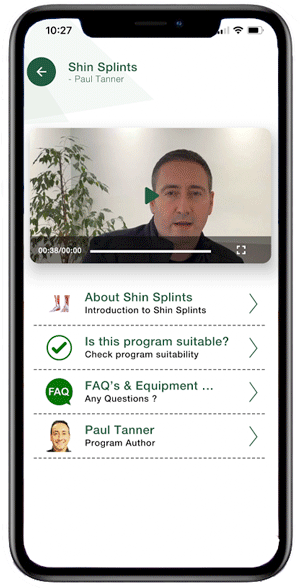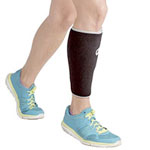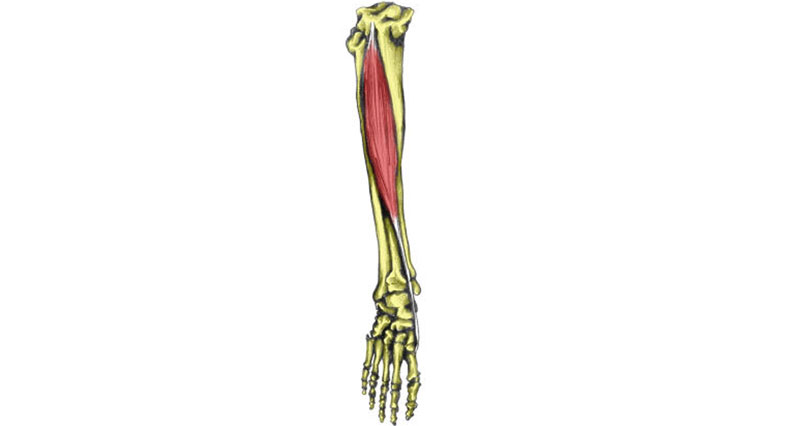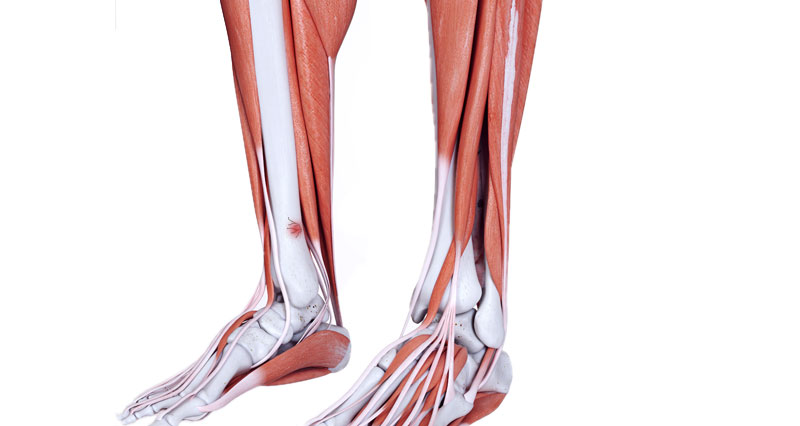Shin pain usually (but not always) develops gradually over time and often through overuse. Shin splints is not a specific injury, but a term used to describe shin pain, of which there are many causes. These include medial tibial stress syndrome, tibial stress fracture and compartment syndromes.
Click where it hurts:
Here we explain the common and not-so-common causes of shin pain on the outside and inside of the lower leg.
Inside of the shin
The following injuries cause pain on the inside of the lower leg:
Shin splints
Shin splints are a common name people use to describe gradual onset pain at the front and inside of the lower leg. However, it is not a specific injury or diagnosis itself. There are a number of injuries that cause shin splints type pain:
Medial tibial stress syndrome
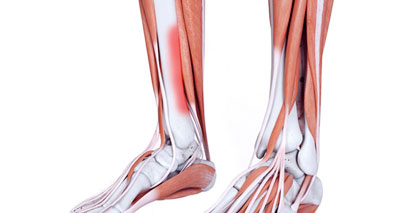
Medial tibial stress syndrome is the most common cause of inside shin pain. Muscles pull against the periosteum (outer bone layer) causing pain and inflammation. Symptoms consist of:
- Gradual onset pain on the inside of the lower part of the tibia (shin bone)
- Tenderness with possible swelling or redness over the area.
- Lumps and bumps along the surface of your shin bone, where new bone growth has occurred.
- More on Shin splints
- Go to Shin splints rehabilitation program
Tibia stress fracture
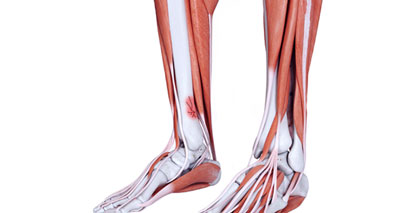
A Tibia stress fracture is a hairline fracture of the bone caused by overuse. Symptoms are similar to medial tibial stress syndrome:
- Long-term gradual onset pain on the inside lower part of the shin
- Tenderness and sometimes swelling
- An X-ray may not show a stress fracture until it has started to heal
- More on Tibia stress fracture
Periosteal Contusion (Bone Bruise)
A periosteal contusion is also known as a bone bruise. It is bruising of the periosteum or tough thin sheath which surrounds the outer surface of the bone.
- More on Periosteal Contusion
Pain on the outside of the shin
The following injuries cause pain on the outside of the shin:
Anterior compartment syndrome
A compartment syndrome occurs when a muscle swells up within its surrounding sheath, causing increased pressure and pain.
Acute symptoms:
- Acute compartment syndrome can develop from direct trauma or impact on the shin.
- Bleeding of the muscle within the sheath surrounding it occurs, causing increased pressure and pain which can be severe.
- If the pain becomes progressively worse and acute compartment syndrome is suspected, then seek medical attention immediately, as long-term injury can result.
Chronic symptoms:
- With gradual onset or chronic shin pain on the outside of the leg, the large tibialis anterior muscles increase from training and overuse.
- You will probably find it difficult to lift up your foot (dorsiflexion).
- When you exercise, the muscle fills with blood and expands causing pain.
- With rest, your pain eases, only to return again when normal training resumes.
- More on Anterior compartment syndrome
Lower leg fractures
Tibia fractures – a break of the tibia bone in the lower leg. The tibia is the thicker weight-bearing bone.
Fibula fractures – a break of the thinner fibula bone on the outside of the lower leg.
Less common causes of shin pain
DVT (Deep Vein Thrombosis) is a blood clot in a vein, commonly seen in the calf muscle are. It is more common following surgery or long-haul flights. The main symptom is constant pain and tenderness at a point deep in the muscle.
It is essential that a DVT is correctly diagnosed because if the blood clot comes loose, then it could find its way into the heart causing serious injury or death.
Popliteal artery entrapment is also more likely to appear as calf pain. However, pain may be felt on the outside of the shin in the anterior compartment or the big muscle on the outside of the shin.
Referred pain – where a problem or injury elsewhere causes pain in the shin. For example from the spine, the ankle joint, from a cyst on the knee cartilage, or from a Baker’s cyst. A Bakers cyst is a swelling behind the knee and, although this can cause symptoms, it is not particularly common.
Osgood Schlatter disease is a painful injury of the knee affecting children between the ages of 8 and 15 years old. Pain is felt on the bumpy bit at the top of the shin but may radiate down.
Pes anserine bursitis is inflammation of a bursa or sack of fluid on the inside of the knee. Pain is more usually felt on the inside of the knee rather than the shin.
Other less common causes of shin pain in the athlete include:
- Femoral endarteritis
- Atherosclerotic disease
- Proximal tibiofibular subluxation
- Cramp
Important – do not miss
The following conditions rarely cause shin pain, however, a doctor or professional practitioner should be aware of them, particularly if shin pain is persistent or not responding to conventional treatments.
- Syphilis
- Sickle-cell anemia
- Hyperparathyroidism
- Sarcoidosis
- Rickets
- Paget’s disease of the bone
- Erythema nodosum.
Tumours of bone and soft tissue are rare, but most likely occur in athletes in their 20s and 30s. Osteosarcomata can occur at the ends of the long bones, particularly of the lower leg causing joint pain.
Infections such as osteomyelitis or cellulitis may cause pain.
Immediate first aid for shin pain
Immediate treatment is to apply the P.R.I.C.E. principle (protection, rest, ice, compression & elevation).
- Protection – Prevent the shin from suffering from further damage. Stop training or playing immediately and apply cold therapy and a compression wrap.
- Rest – This is important and vital for recovery. Try to reduce the demands of your daily activity and stop doing any sports that exacerbate the pain. An athlete must know when to stop training and allow the injured area to heal otherwise repetitive minor injuries can often result in a more severe injury that keeps the athlete out for much longer.
- Ice – Apply ice or cold therapy to the painful area of the shin to help reduce the symptoms of pain and any inflammation. Apply for 10 minutes every hour initially for the first 24 to 48 hours, reducing frequency to 3 or 4 times a day as symptoms improve. Do not apply ice directly to the skin as it may burn. Either wrap ice in a wet tea towel or use a commercially available cold pack.
- Compression – The use of compression support or compression bandages on the lower leg can help reduce swelling.
- Elevation – Elevating the lower leg above heart level whenever possible to help reduce swelling due to the effects of gravity.
Read more on PRICE principles
Shin pain rehabilitation programs
- Shin splints rehabilitation program – a step-by-step rehab program to cure your medial shin pain.



